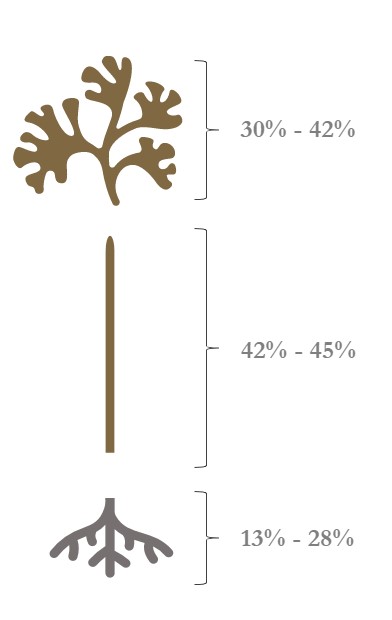The seaweed we harvest is called kelp or Laminaria hyperborea, a species of large brown algae from the laminariaceae family, found in the sublittoral zone of the North Atlantic Ocean.
Kelp grows primarily in the northeast Atlantic, including the Norwegian Sea and North Sea, all the way from Kola Peninsula to the mid-Atlantic ridge of Portugal.
Kelp forests grow on rocks at depths of 7-30 meters. Kelp has a characteristically long stem that can grow up to 3 meters and is 4-6 cm in diameter, with leaves (the frond) at the top. It can grow to be up to 11 years old before it becomes too heavy and storms dislodge it from the rocky bottom and wash it ashore. Each year, 10-20% of the older plants are torn up by storms.

Alginates can be extracted from Laminaria hyperborea. Alginates are naturally occurring ionic polymers obtained from brown seaweeds . They have been extensively researched and are used for many purposes because of its ability to absorb and hold water.
Subscribe our newsletter and get information about all latest updates.
Kelp (Laminaria hyperborea) has been widely used around the world for a long time. It has been used in Norway and France for many decades.